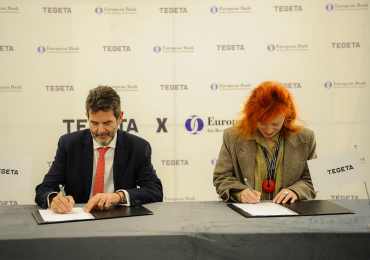According to Geostat, the average monthly salary in Georgia in 2024 was ₾2,059. After deducting income tax and pension contributions, the average take-home salary amounts to ₾1,614. Compared to 2023, the nominal average salary increased by 16.5% in 2024. Real wage growth, which accounts for inflation, was 14.6%.
In the fourth quarter of 2024, the average monthly salary was ₾2,218 (₾1,739 take-home). Compared to the fourth quarter of 2023, the real growth was 7%. The data from the fourth quarter better reflects the current wage level than the full-year average for 2024. Therefore, this article presents the salary ranking by sector based on the fourth quarter of 2024. Unfortunately, the education sector, where salaries are the lowest, does not make it into the top ten.
1. Information and Communication
The leading sector is information and communication (ICT), with an average monthly salary of ₾4,008 (₾3,142 take-home). Within this sector, the highest salaries are earned by specialists in computer and software services (IT). Although nominal wages in this sector have decreased by 7% over the past year, they have nearly doubled over the last five years. In real terms (adjusted to 2019 prices), wages have increased by 62% over five years.
In 2024, around 16,000 people were employed in this sector. The average monthly labor productivity per employee was ₾26,940. Wage levels are primarily determined by labor productivity — the average value added generated by one employee.
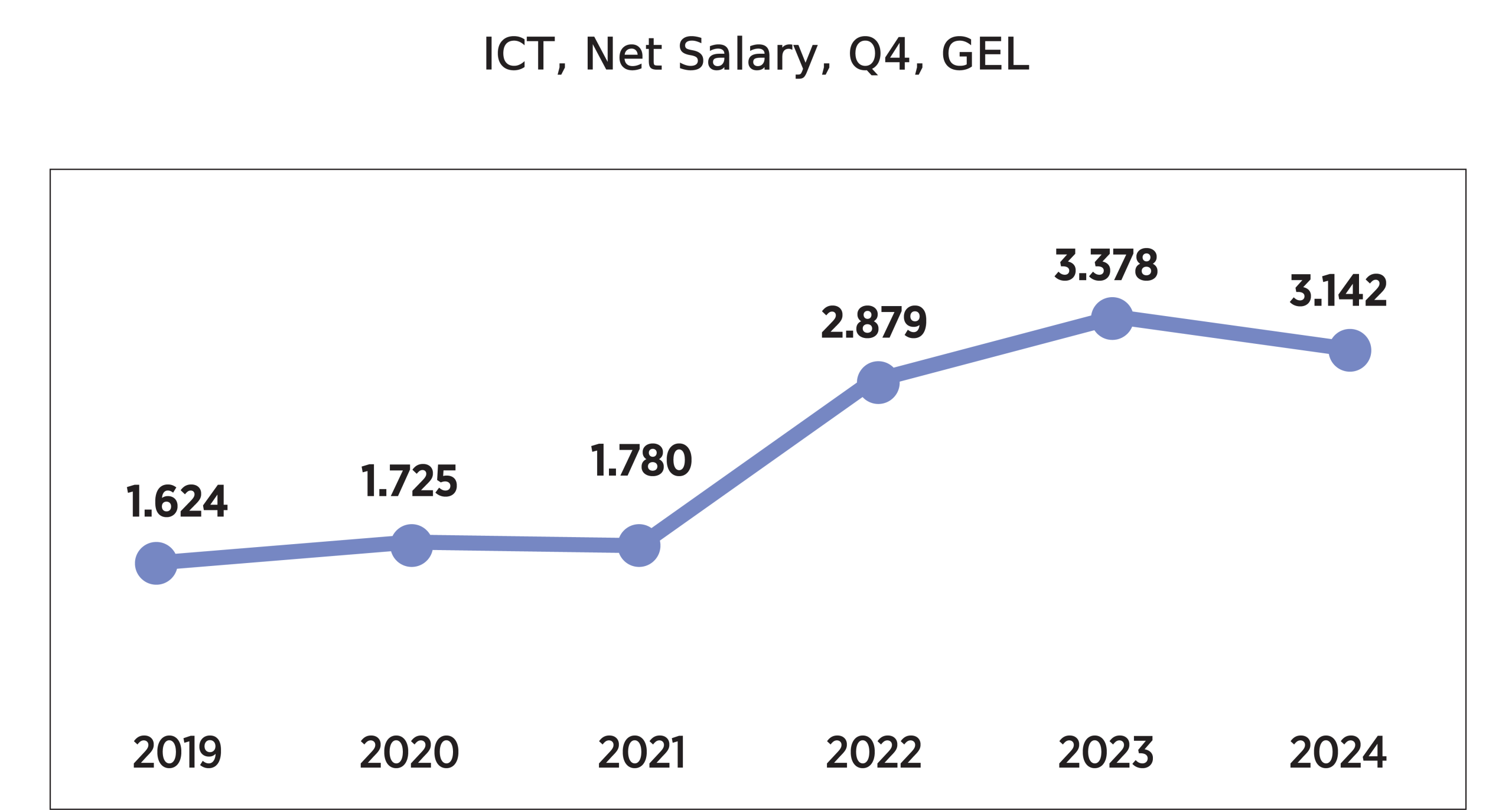
2. Financial Activities
Ranked second is the financial sector, where the average monthly salary is ₾3,373 (₾2,645 take-home). This sector includes banks, insurance companies, and other financial services providers. Nominal wages in this sector increased by 8.5% over the past year and by 74% over the past five years. Real wages grew by 43% during the same period.
In 2024, approximately 36,000 people were employed in the financial sector. The average monthly labor productivity per employee was ₾9,800.
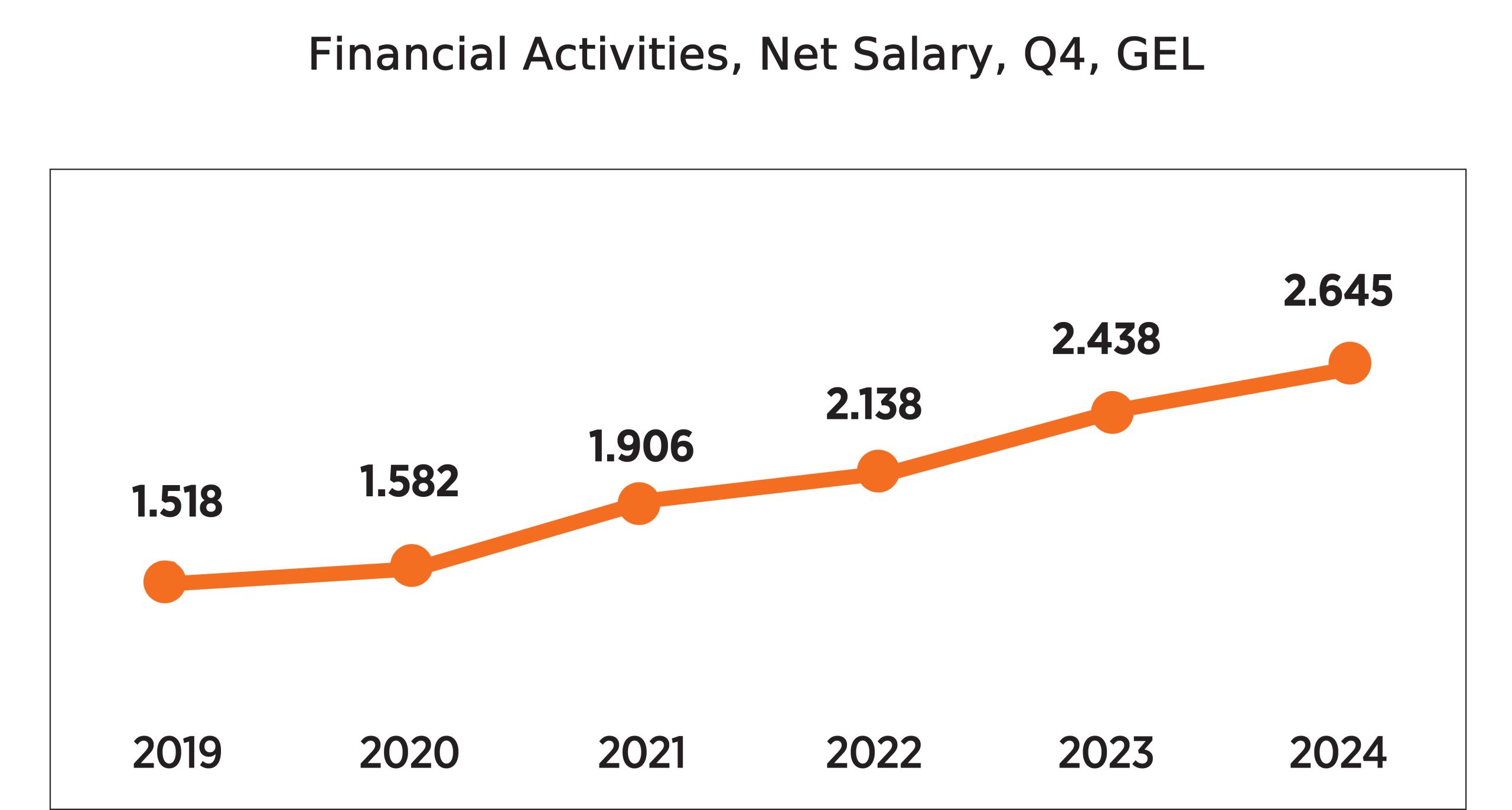
3. Construction
In the construction sector, the average monthly salary is ₾3,362 (₾2,636 take-home). Over the past year, nominal wages increased by 10%, and over the past five years, they have risen by 65%. Real wages (adjusted for inflation) grew by 34% in the same five-year period.
In 2024, approximately 124,000 people were employed in the construction sector. The average monthly labor productivity per employee was ₾4,515.
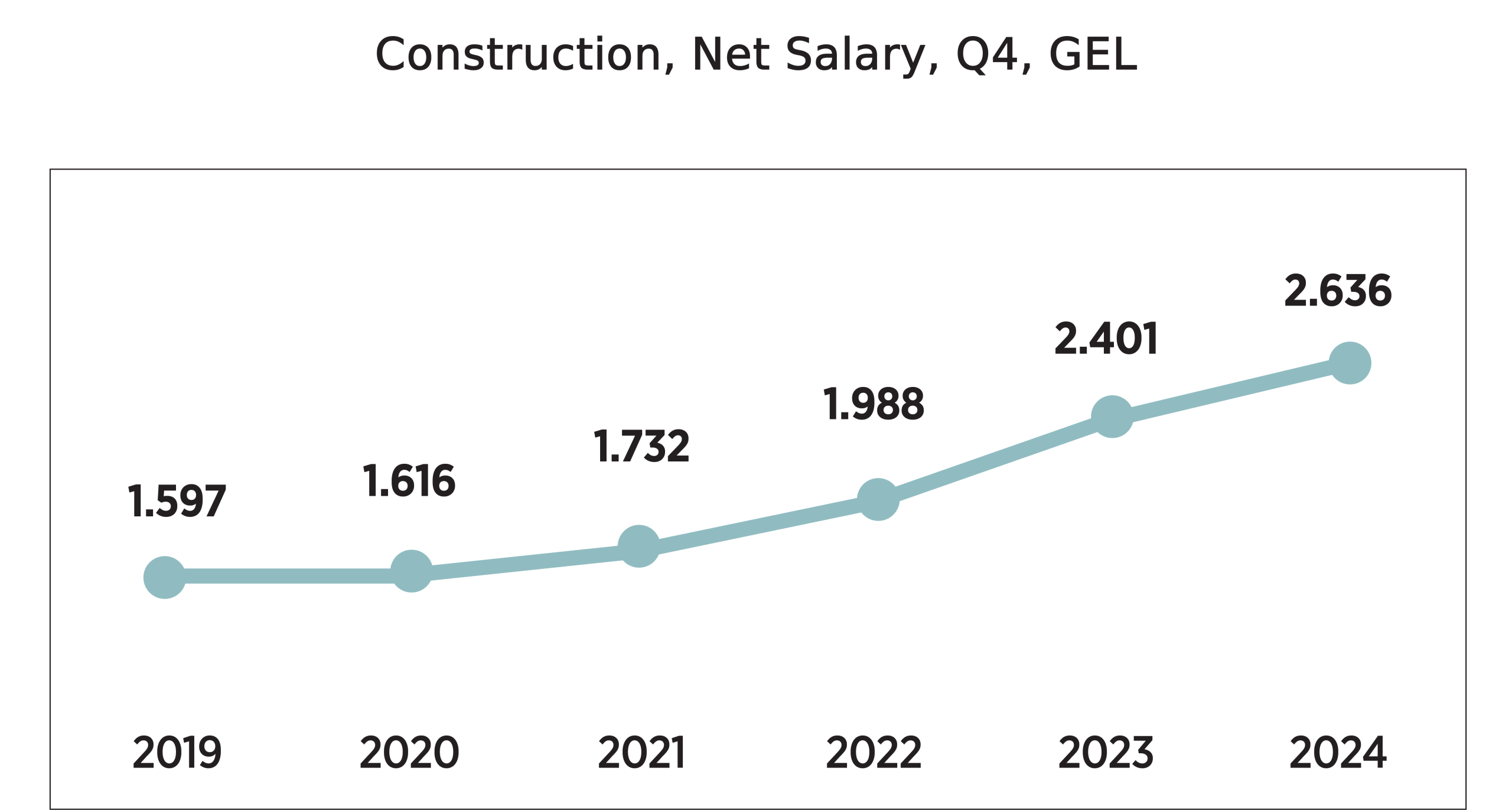
4. Transportation and Storage
In the transportation and storage sector, the average monthly salary is ₾2,492 (₾1,953 take-home). Over the past year, nominal wages increased by 3.1%, and over the past five years, they have risen by 49%. Real wages (adjusted for inflation) grew by 18% in the last five years.
In 2024, about 85,000 people were employed in this sector. The average monthly labor productivity per employee was ₾4,579.
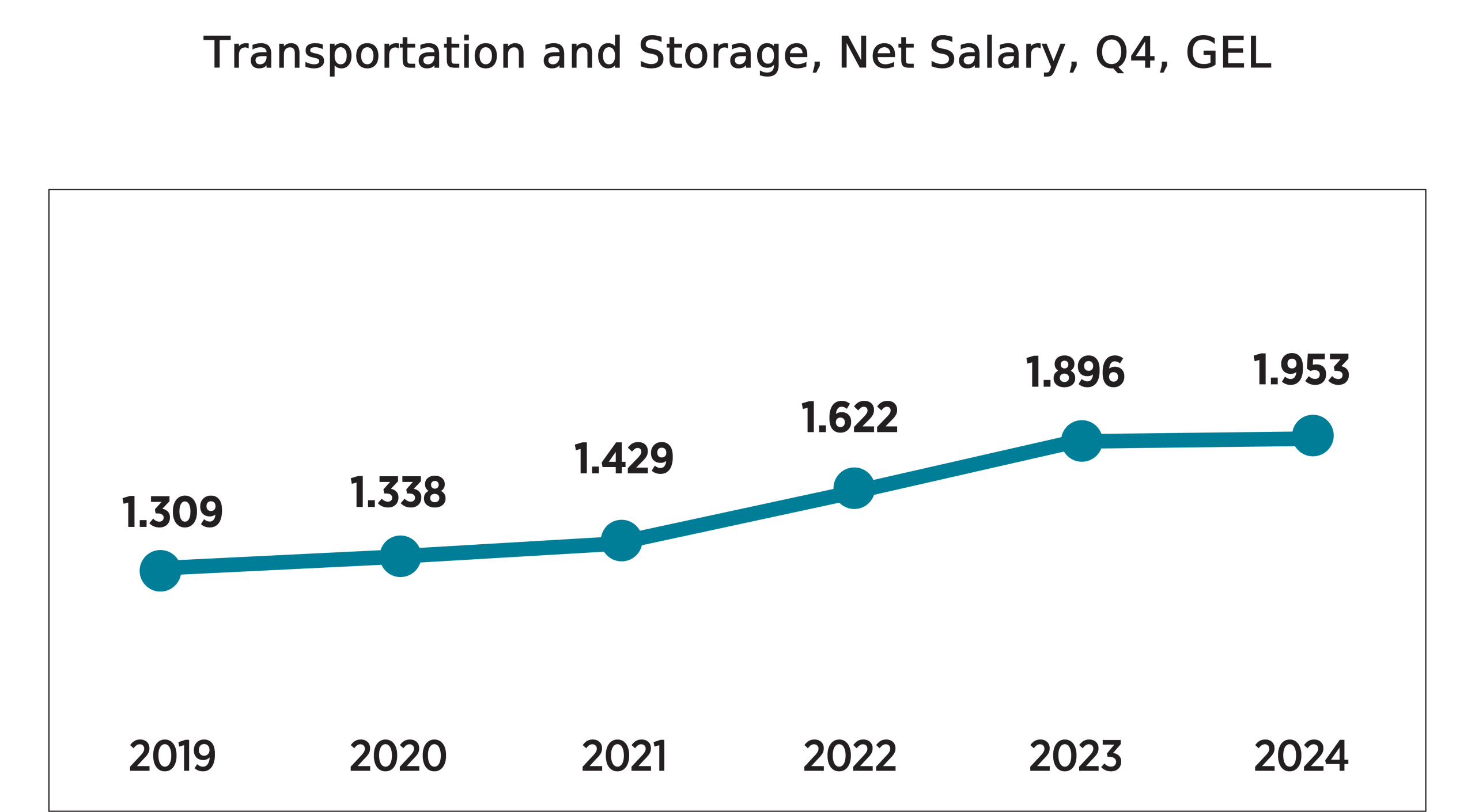
5. Industry
In the industry sector, the average monthly salary is ₾2,440 (₾1,913 take-home). Nominal wages increased by 14.8% over the past year and by 30% over the last five years. Real wages (adjusted for inflation) grew by 29% during this period.
Industry includes three subsectors:
- Electricity and natural gas supply (average salary ₾2,584)
- The mining industry (average salary ₾2,570)
- The manufacturing industry (average salary ₾2,166)
In 2024, approximately 180,000 people were employed in the industry sector. The average monthly labor productivity per employee was ₾4,713.
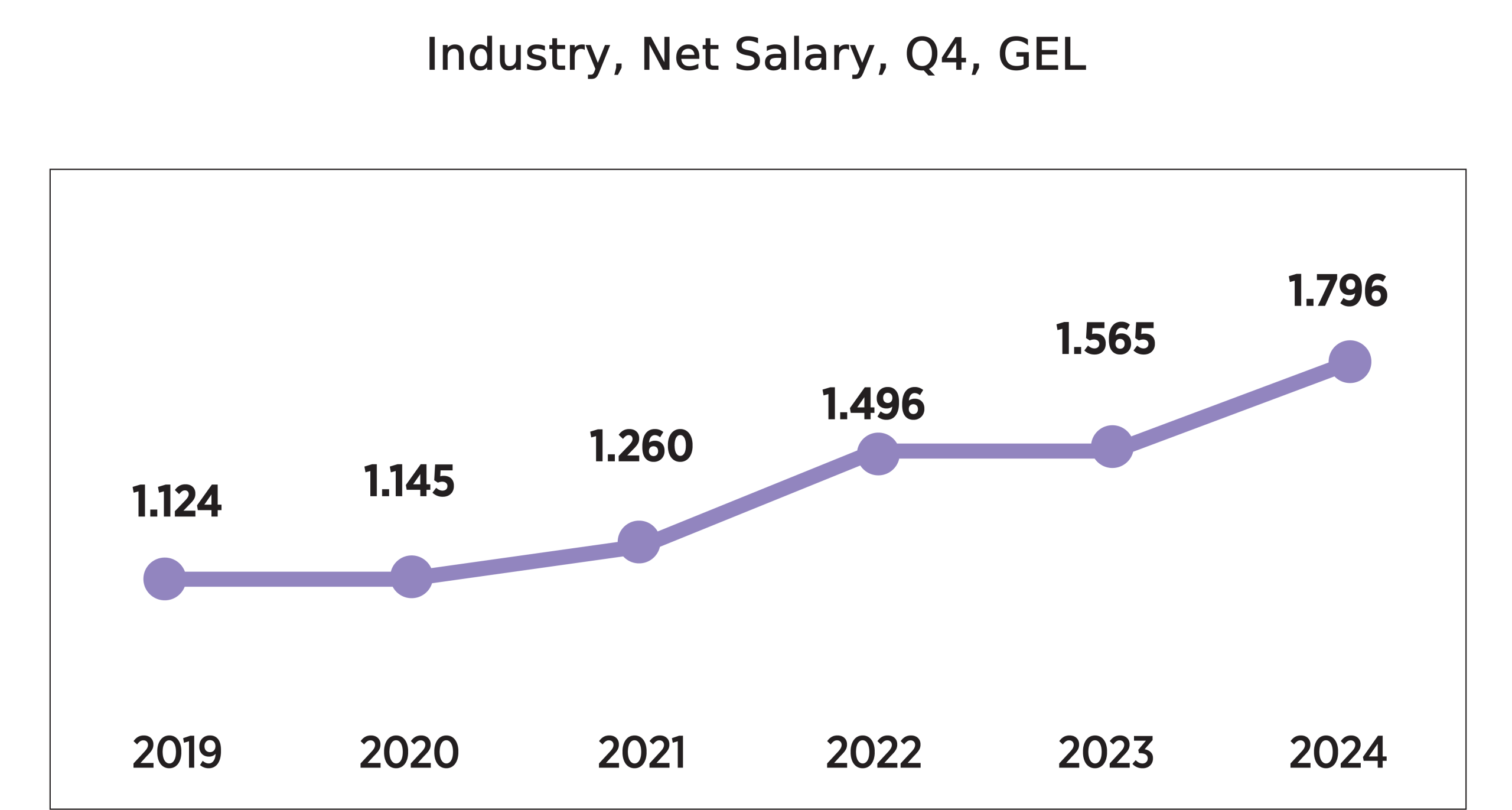
6. Public Administration
In the public administration sector, the average monthly salary is ₾2,425 (₾1,902 take-home). Nominal wages increased by 0.7% over the past year and by 54% over the last five years. Real wages (adjusted for inflation) grew by 23% during this period.
In 2024, approximately 87,000 people were employed in public administration. The average monthly labor productivity per employee was ₾5,357.
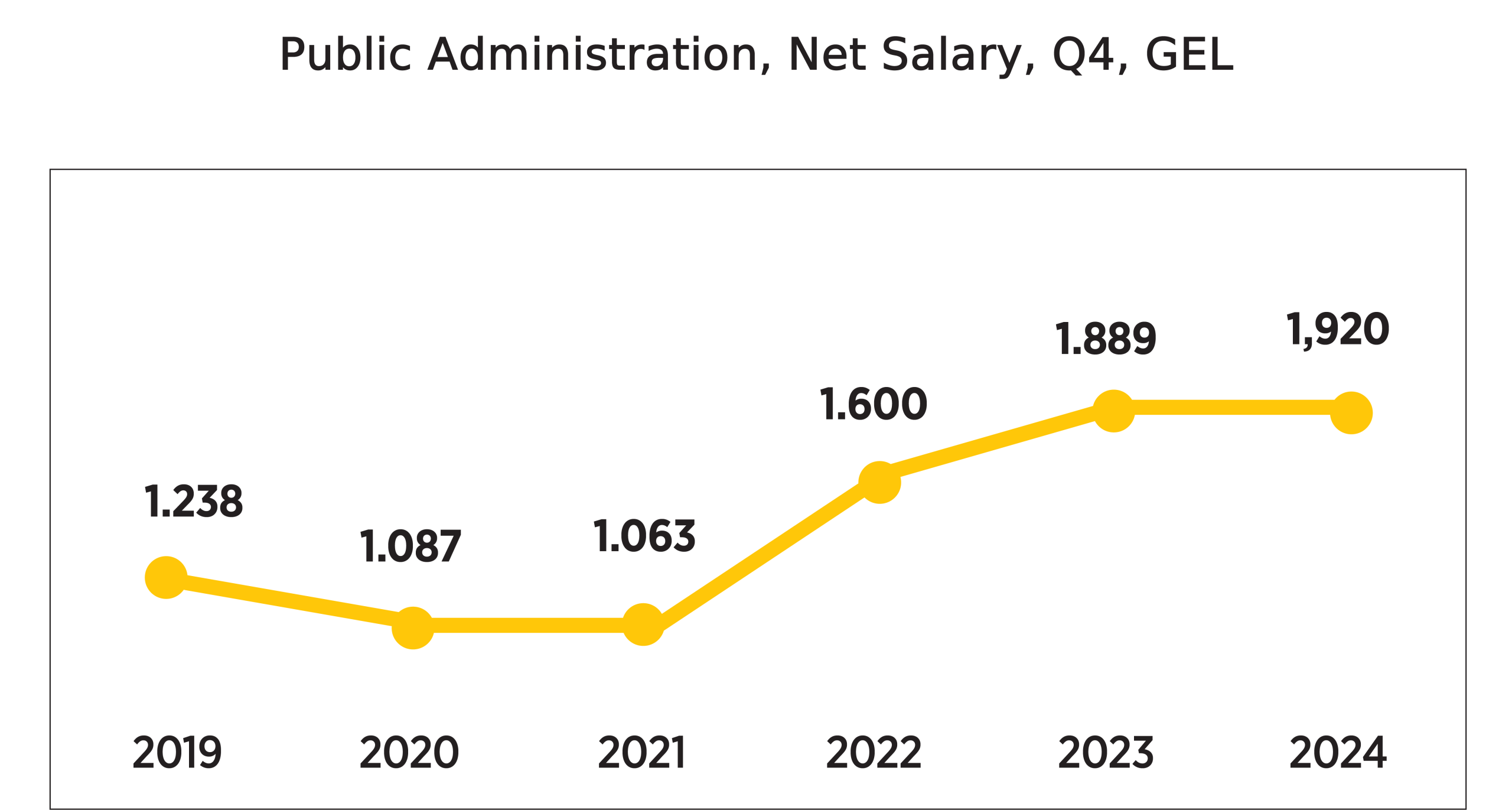
7. Trade and Repair of Motor Vehicles
In the trade and motor vehicle repair sector, the average monthly salary is ₾2,045 (₾1,603 take-home). Nominal wages increased by 9.2% over the past year and by 67% over the last five years. Real wages (adjusted for inflation) grew by 36% during this period.
In 2024, approximately 226,000 people were employed in this sector. It ranks first in terms of employment, surpassing agriculture in 2024. The average monthly labor productivity per employee was ₾4,502.
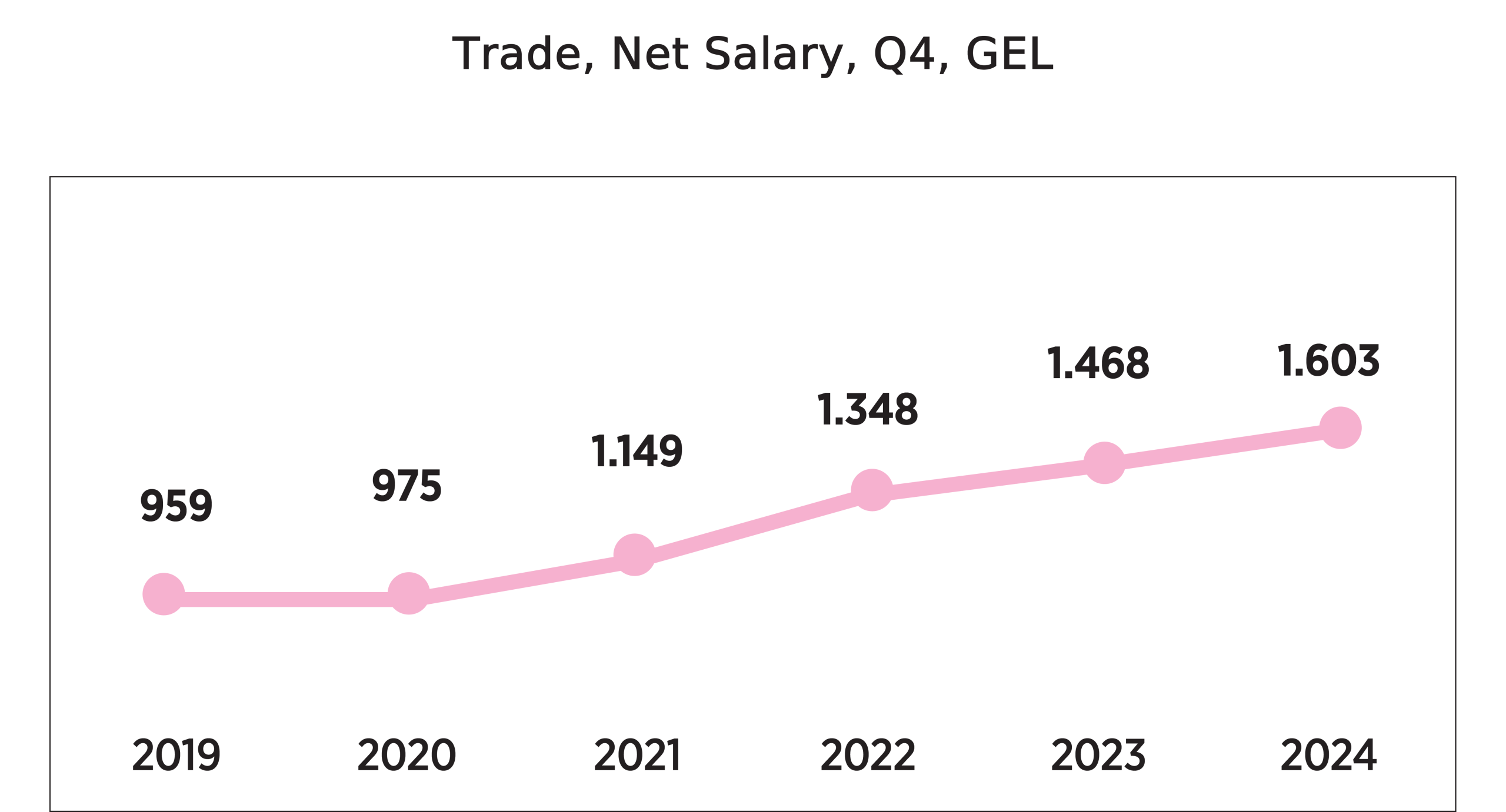
8. Arts and Entertainment
In the arts and entertainment sector, the average monthly salary is ₾2,035 (₾1,595 take-home). Nominal wages increased by 5.7% over the past year and by 60% over the last five years. Real wages (adjusted for inflation) grew by 29% during this period.
In 2024, approximately 32,000 people were employed in this sector. The average monthly labor productivity per employee was ₾8,514.
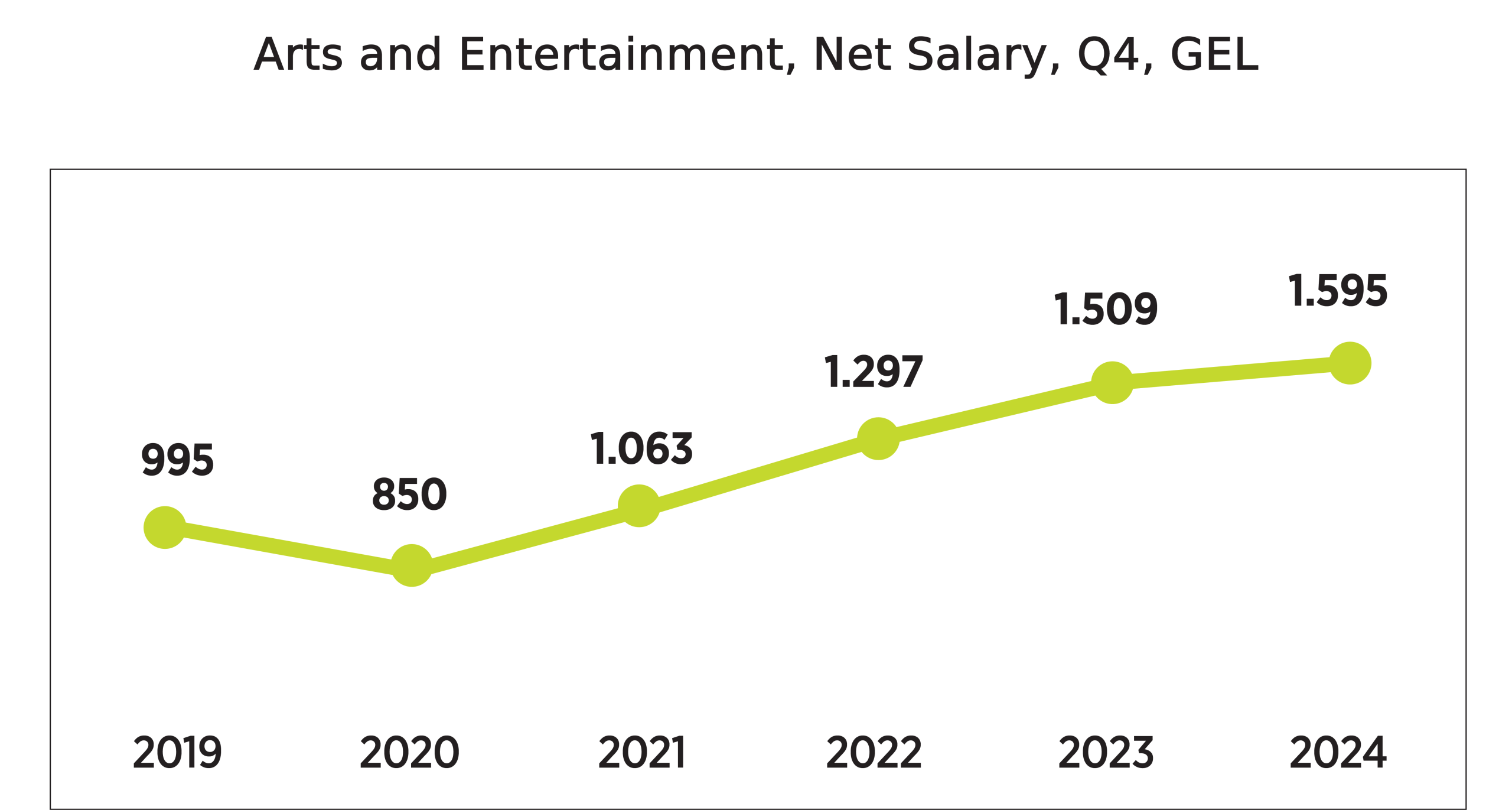
9. Real Estate
In the real estate sector, the average monthly salary is ₾2,013 (₾1,578 take-home). Nominal wages increased by 2.5% over the past year and by 54% over the last five years. Real wages (adjusted for inflation) grew by 23% during this period.
In 2024, approximately 32,000 people were employed in the real estate sector. The turnover in this sector is very high because it encompasses activities such as buying and selling property, renting, and other related services. Consequently, the high turnover per employee — averaging ₾175,000 — does not serve as an accurate indicator of labor productivity.
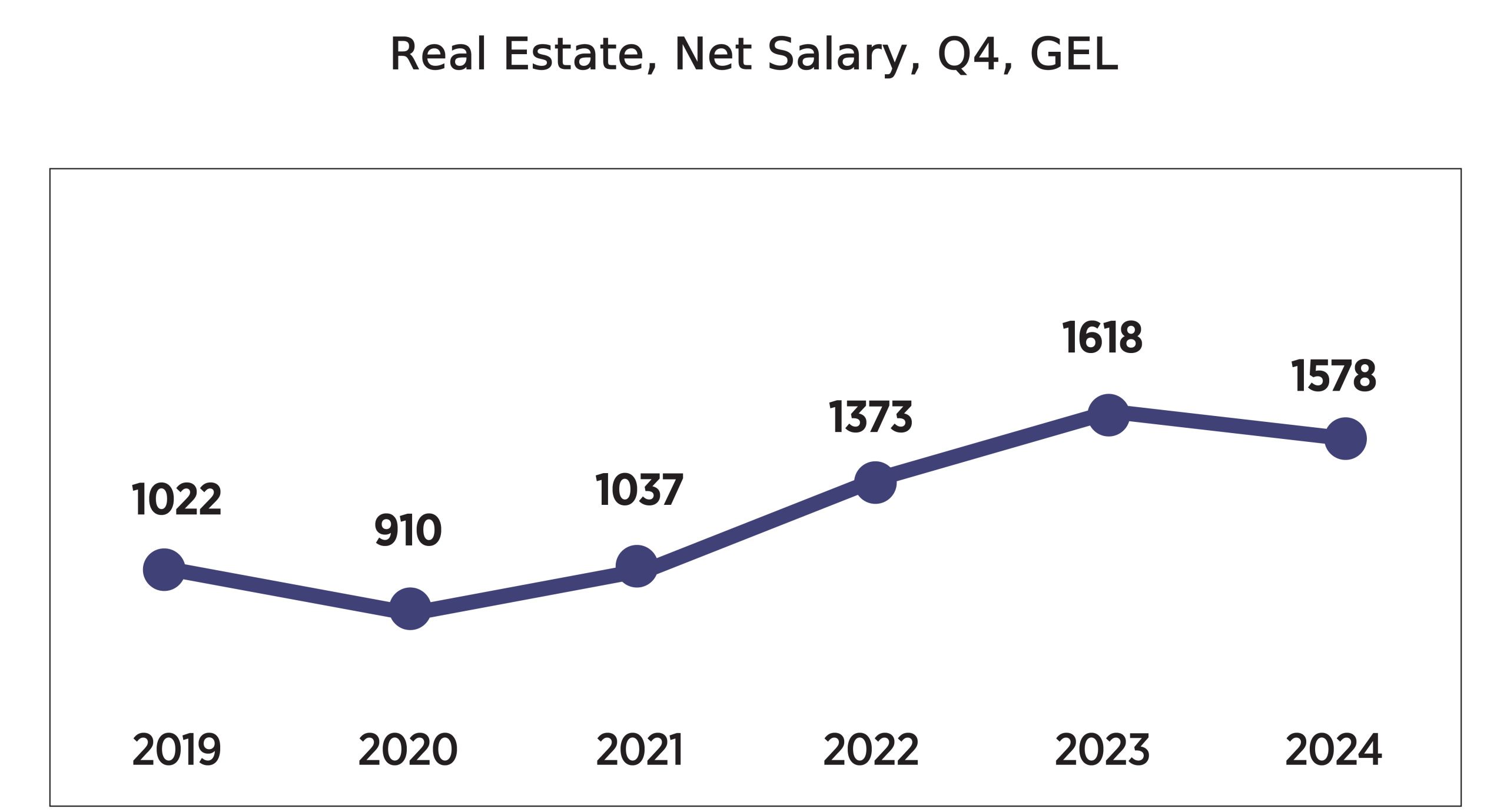
10. Healthcare
In the healthcare sector, the average monthly salary is ₾1,844 (₾1,446 take-home). Nominal wages increased by 16% over the past year and by 63% over the last five years. Real wages (adjusted for inflation) grew by 32% during this period.
Starting January 1, 2024, a mandatory minimum wage was introduced in the healthcare sector, which raised the average salary level.
In 2024, approximately 61,000 people were employed in this sector. The average monthly labor productivity per employee was ₾4,141.
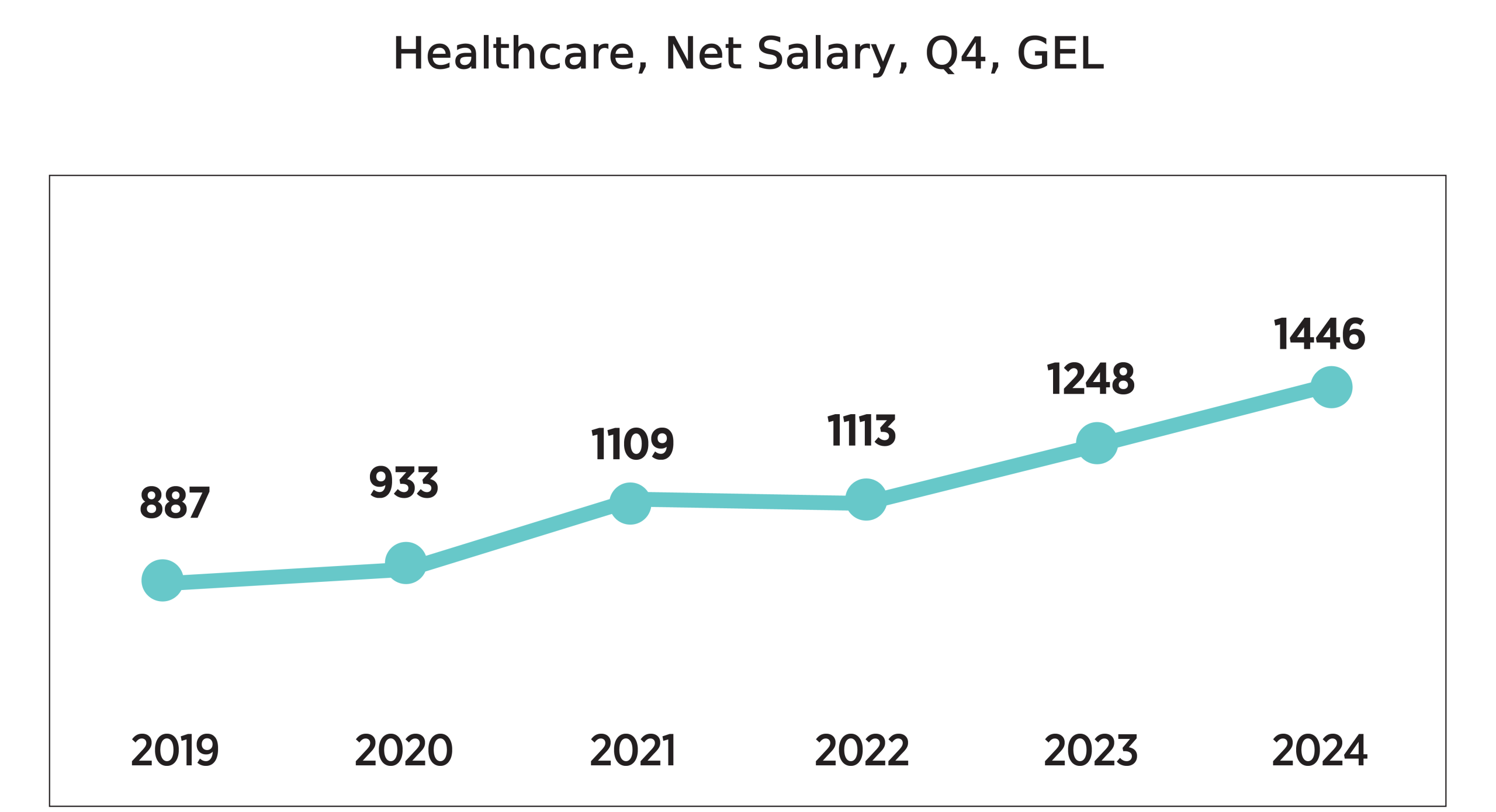
"Forbes Georgia-ის სარედაქციო ბლოგპოსტების სერია "როგორ გამდიდრდა“ და "საქართველო რეიტინგებში".










